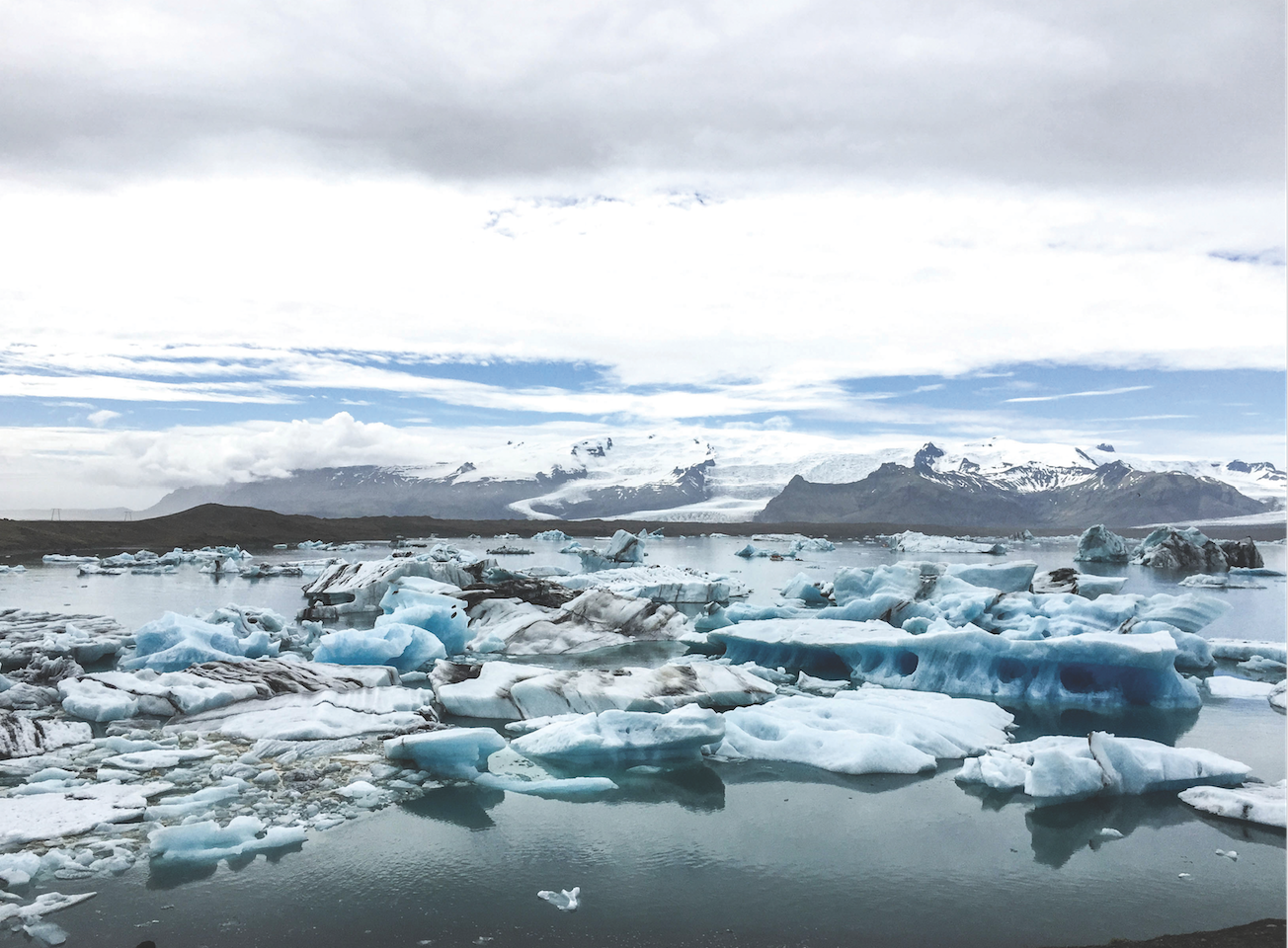In 2010, there was a buzzworthy eruption of the Icelandic volcano, Eyjafjallajökull. Its ash cloud caused a huge disruption to air traffic, cancelling thousands of European flights for five days.
In Iceland, the legacies of volcanoes and glaciers are largely intertwined. Telling a story about one depends on an understanding of the other. This was certainly true for the 2010 volcanic eruption, and it has great implications for the future. As the planet suffers an increasingly climate, a rise in Iceland’s magma levels could spike volcanic activity.
How do volcanoes and glaciers — a dichotomy of hot and cold — affect one another? Scientists can look at levels of magma, or melted rock inside the earth, to predict whether a volcano will erupt. Magma levels are a key indicator of underground unrest. Although rocks melt at different temperatures based on composition, rocks held at low pressures tend to melt at lower temperatures. The massive weight of glaciers causes significant pressure on the earth below, compressing the crust and pushing down through the mantle, where magma forms. As glaciers melt and their volumes decrease, they exert less downward pressure, which allows the rock beneath to melt into magma more quickly. Then, the increase in magma beneath the earth’s surface can have a substantial impact on the volcanic activity above ground.
Several studies over the past decade have examined the rate of magma formation as a result of deglaciation in Iceland. Located along an Atlantic Ocean fault line and above a hot spot, Iceland is a powerful source of volcanic activity. Glaciers are prominent above its volcanic areas, posing a complicated geological problem as deglaciation pushes forward with climate change. Warming of the earth contributes to a faster melting of glaciers, a subsequent faster melting of rock into magma, and the potential for more volcanic eruptions. Climate change could spark such a series of events.
The first suggestion at a connection between deglaciation and increased magma production in Iceland came in 1991. Two scientists, Hardarson and Fitton, looked into deglaciation of the late Pleistocene age and found a distinct correlation between ice melting and magma formation. Another of the earlier studies, published in 2008, focused on the Vatnajökull ice cap, the largest in Iceland. The researchers found that the glacier’s thinning and retreating caused approximately 0.014 cubic kilometers of magma to form each year. As a result of this magma growth, the researchers predicted an increase in volcanic activity under the ice cap.
More recently, a 2013 study examined a larger area of the mantle under Iceland’s crust. Led by Peter Schmidt of Uppsala University in Sweden, the team used updated mathematical models to understand how the mantle melts. The scientists concluded that 0.2 cubic kilometers of magma melts each year under Iceland’s crust — a figure that correlates to 0.045 cubic kilometers of magma melting per year under the Vatnajökull ice cap. These studies are not necessarily inconsistent. Rather, the increase between their figures is due to an improved understanding of how the mantle melts into magma.
According to Yale geology and geophysics professor Jeffrey Park, the explosivity of a volcano is determined by the magma’s chemical composition. Rocks with volatile compounds, such as water, carbon dioxide, sulfur, and silica, melt and form magma containing pockets of gas or liquid that cause explosive eruptions with large ash clouds. Eyjafjallajökull’s eruption was dramatically explosive because it included silica-rich magma that had been sitting in the crust of the earth for hundreds of years. In contrast, this year’s eruption of Bardarbunga, a volcano underneath the Vatnajökull ice cap, has emitted about eight times as much magma as Eyjafjallajökull, but without a massive ash cloud or an explosive eruption due to variations in magma composition.
Many unanswered questions remain about how Iceland’s volcanoes react to deglaciation. “We don’t know how much of the magma being generated is reaching the surface,” Schmidt said, referencing the difficulty of estimating the probability of future eruptions. Moreover, the distribution of magma underneath Iceland is still unclear to researchers, who know how much magma is produced, but not where it goes. How long magma remains magma is also uncertain, as it will eventually solidify to become part of the earth’s crust. Finally, researchers are unable to thoroughly predict the composition of magma in a chamber, making it challenging for them to know which types of eruptions to anticipate.
Deglaciation in Iceland is causing the melting of more magma and increasing the likelihood of volcanic activity in Iceland. But researchers are not sure exactly how the increase in magma volume will affect the frequency or power of eruptions. For now, scientists remain uncertain whether an eruption with the magnitude of Eyjafjallajökull’s in 2010 will happen again in a few years or a few decades. What they do know is that another major eruption is surely on its way.
Cover Image: Photo by Stephen Le Brenton.

